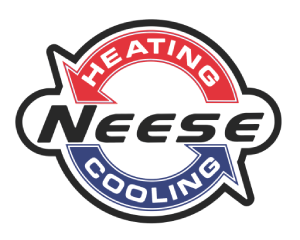
Ductless Systems
Going Ductless? What to Look for in a Ductless Heat Pump System
Ductless heat pumps have long been popular in Europe and Asia as a simple and energy efficient way to keep homes comfortable. Like conventional ducted heat pump systems; they’re highly efficient. Ductless heat pumps go one step further, though. Their ability to warm and cool without the need for ducts makes them easier and cheaper to install than ducted systems.
Ductless heat pumps can handle both chilly winter nights and blazing summer days. They work especially well for the hot, humid summers of Alpharetta and other parts of North Central Georgia. They don’t require construction for duct installation; and they also provide a damage-free way to equip our area’s historical homes with state-of-the-art heating and cooling.
That lack of ductwork is part of what makes these systems so efficient. There are no duct leaks or design flaws to drop the overall efficiency of your heating and cooling system.
Many models of ductless heat pumps are available from a number of manufactures. As with any other heating or cooling system, quality and efficiency vary widely. Lifespan and features are important; but efficiency is the first thing you’ll want to consider when you’re checking out the systems on the market.
Several ratings and industry-wide standards are available to help you compare efficiency between different models. They use independently verified information rather than the manufacturer’s marketing material. There are four main ratings you’ll want to look at:
- HSPF
- SEER
- Energy Star Standards
- CEE High-Efficiency Specification
Heating Seasonal Performance Factor (HSPF)
As the name implies, HSPF indicates a system’s heating efficiency over the heating season. The rating is used for both conventional ducted systems as well as for ductless systems. It’s calculated by dividing the amount of heat the system puts out over the season; by the amount of electricity used to produce that heat. In this way, it’s a little like “miles per gallon” for your car.

HSPF calculated through testing in accordance with AHRI 210/240 standards. The heat output and also the energy input are averaged out over the whole heating season. This accounts for the system’s efficiency on mild fall days; when efficiency isn’t difficult to achieve, as well as on the coldest winter days; when efficiency is more of a challenge. Because of this, HSPF gives you a reasonable idea of how efficient the system is under real-life conditions. Not just in a testing laboratory.
A higher HSPF indicates a more efficient system. The minimum HSPF set by the Department of Energy (DOE) is 7.7; but for greater energy savings look for a system with an HSPF of 8 or higher. An HSPF of 8.2 or higher is considered high efficiency, but ductless systems with HSPFs of 9 and 10 are also available.
Seasonal Energy Efficiency Ratio (SEER)
Because heat pumps cool as well as heat, they have a rating for their cooling efficiency. The SEER is that rating. It’s the same rating you’ll find on air conditioning systems. Similarly to HSPF, SEER is calculated by dividing the cooling power the system provides by the amount of electricity needed to provide it.
A higher SEER means a more efficient system. According to current regulations, heat pumps and A/Cs must achieve a SEER of at least 13, although systems with SEERs ranging into the mid-20s are also available.
SEER is averaged over the season, but it’s accuracy is limited by the fact that it’s based on a constant outdoor temperature of 82 degrees, an indoor temperature of 80 degrees, and an indoor humidity of 50 percent. Needless to say, for some areas, such as Atlanta and Alpharetta, these parameters are unrealistic. Our summer temperatures and humidity levels often rise much higher, potentially lowering the efficiency of our ductless heating and cooling systems. Despite it’s imperfections, though, a system’s SEER is still worth considering.
Previously, AC and heat pump systems were given only an EER (energy efficiency rating, minus the seasonal averaging). EER is still used today alongside the SEER. EER measures only steady state efficiency under constant operating conditions of 80 degrees indoors and 95 degrees outdoors.
This rating, too, has it’s problems. EER doesn’t account for variations in the time different systems take to reach peak efficiency and it inaccurately assumes the system will be running constantly in 95 degree weather. These days, EER is important primarily for commercial systems, but not so much for residential ones.
Energy Star Standards
One of the simplest ways to find ductless heat pumps with above-average efficiency is to look for the Energy Star logo. Energy Star is a program managed by the U.S. Environmental Protection Agency (EPA) to qualify high-efficiency appliances in a wide variety of categories.
Ductless heat pumps can qualify for the Energy Star logo under the specifications for central air conditioning (CAC) and heat pumps. For this, a split system heat pump will need an HSPF of 8.2 or higher, a SEER of 14.5 or higher, and an EER of 12 or higher. Systems that meet these requirements are around 9 percent more efficient than models that aren’t Energy Star-qualified. For even greater savings, though, ductless heat pumps with HSPFs of 11 or higher and SEERs of 21 or higher are worth considering.
CEE High-Efficiency Specifications
The Consortium for Energy Efficiency, or CEE, is a group of U.S. and Canadian energy efficiency program administrators who have joined forces to help manufacturers, trade union leaders, and government administrators optimize the benefits of current efficiency programs.
Most states and Canadian provinces have laws and guidelines for energy efficiency, but those affected don’t always make the best use of them. The CEE identifies and promotes opportunities for greater energy savings based on those laws and guidelines. The ultimate goal of the consortium is to promote the production of energy efficient products and make them available to more people.
Although the CEE doesn’t promote individual products or manufacturers, it does set standards for high-efficiency equipment. These standards, called the CEE High-Efficiency Specifications are provided for two levels of efficiency.
Tier 1 of the CEE High-Efficiency Specifications for split heat pumps requires the same HSPF, SEER, and EER as the Energy Star standards require. Tier 2 requires a split heat pump to have an HSPF of 15 or greater, a SEER of 12.5 or greater, and an EER of 8.5 or greater.
The CEEs Directory of Energy Efficient HVAC Equipment gives you an easy way to find ductless heat pumps and other products that meet these requirements.
What Else to Look For in a Ductless Heat Pump
Beyond efficiency, there are a few other aspects to check out when shopping for a ductless heat pump:
- Two-stage operation — Two-stage heat pumps are able to run at reduced capacity when your heating or cooling demand is low. This saves energy compared to one-stage systems that can run only at full capacity.
- Scroll compressor — An advancement over the conventional reciprocating compressor, scroll compressors aren’t just more energy efficient, they’re also quieter and longer lasting.
- Durable outdoor unit — A galvanized steel, enamel-painted exterior helps your outdoor unit stand up to the elements.
For professional guidance on finding a ductless system that will keep your home comfortable year round, talk with us at Neese Heating, AC & Plumbing. We provide reliable heating and cooling services throughout Alpharetta, North Metro Atlanta, and elsewhere around Cobb County and North Fulton County. Contact us today.
Learn More About Our Other Services:
- HVAC Service
- AC and Heating Installation
- Heating and AC Repair
- AC and Heating Financing
- HVAC Service Agreements
- Indoor Air Quality
- Home Energy Audits
- Water Heater Installation
Learn More About Our Service Area:
Acworth | Alpharetta | Canton | Cumming | Holly Springs | Johns Creek | Kennesaw | Marietta | Milton | Roswell | Sandy Springs | Smyrna | Woodstock
